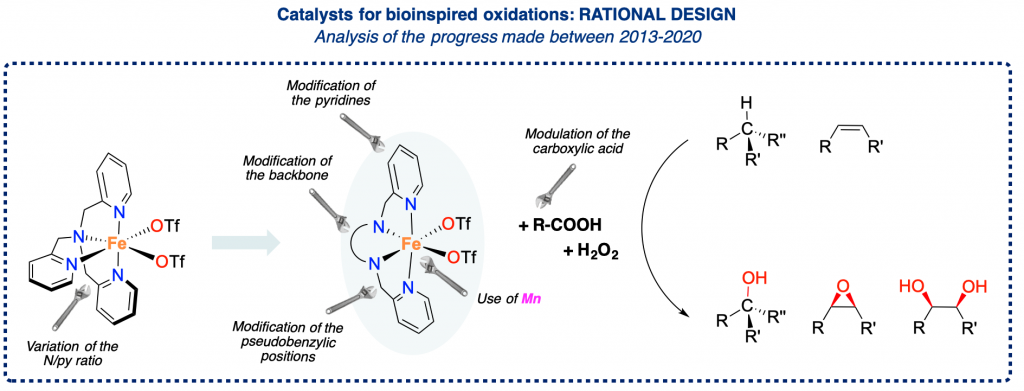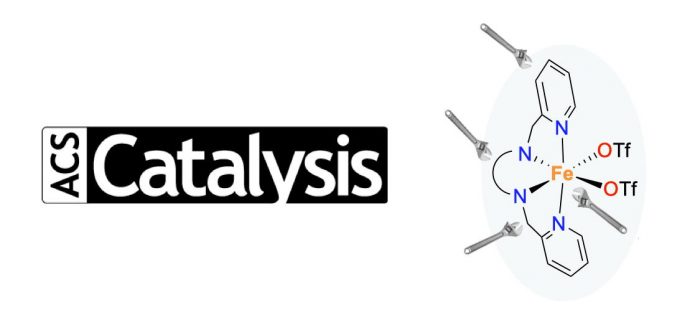The ubiquity and relevance of oxygenated motifs in biologically active compounds calls for the development of effective and selective C-H and C=Coxidation reactions. Inspired by the impressive selectivity and versatility of Nature oxidation catalysts, and especially nonheme Fe oxygenases, chemists have designed small molecule catalysts that can hydroxylate C-H bonds and epoxidize or syn-di-hydroxylate C=C bonds with excellent site- and stereo-selectivity. The structure of these catalysts, that can be seen as iron and manganese coordination complexes evolved from the archetypical Fe(tpa), can be modified to elicit a specific transformation while tuning to some extend their chemo, regio and enantioselectivity. Herein, we analyze the recent evolution (from 2013 to now) of catalyst structure highlighting the rationale behind their design.
This Perspective highlighting recent progress made in the group of Miquel Costas was recently published in ACS Catalysis:
L. Vicens, G. Olivo, and M. Costas
“Rational Design of Bioinspired Catalysts for Selective Oxidations”
ACS Catal. 2020, [], ASAP-
DOI: 10.1021/acscatal.0c02073

Girona, July 6, 2020
For more info: sec.iqcc@udg.edu

